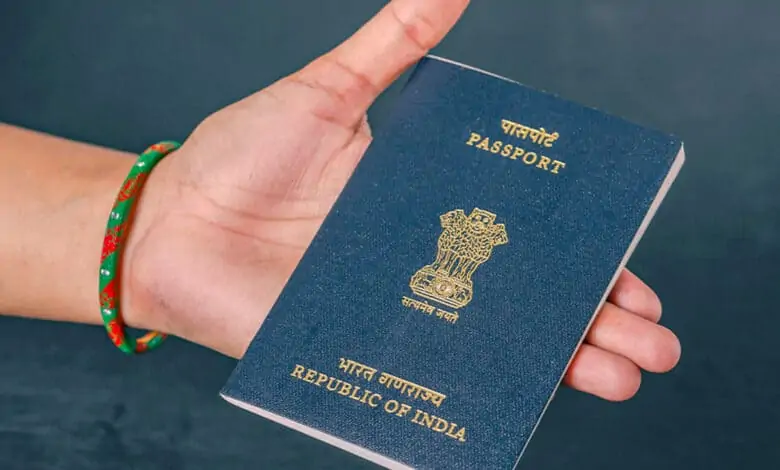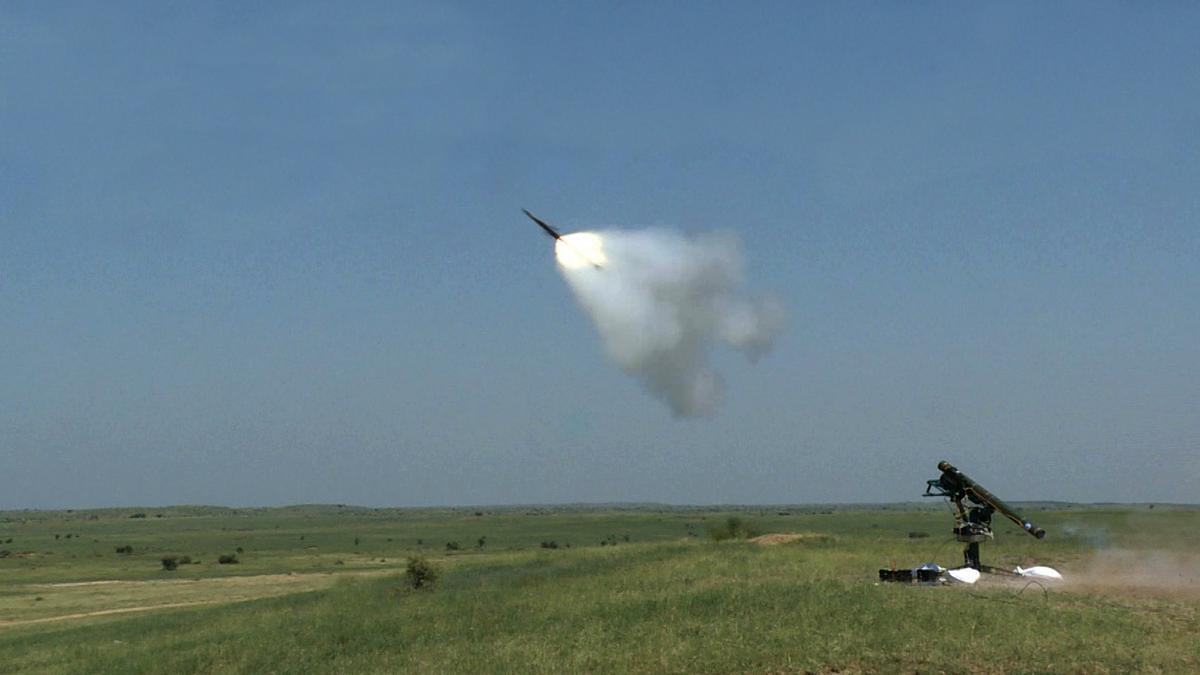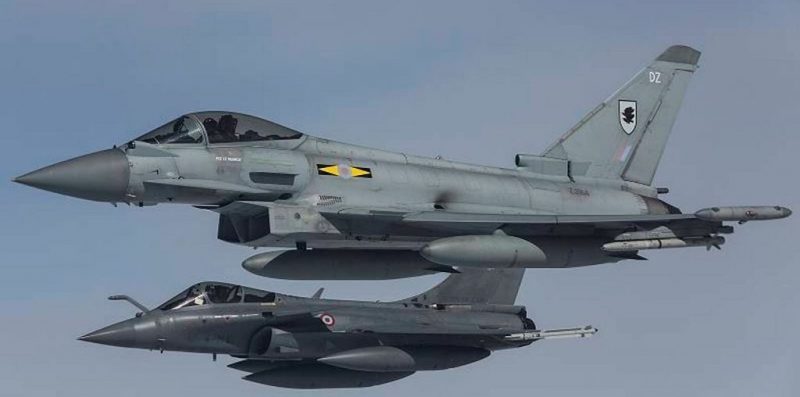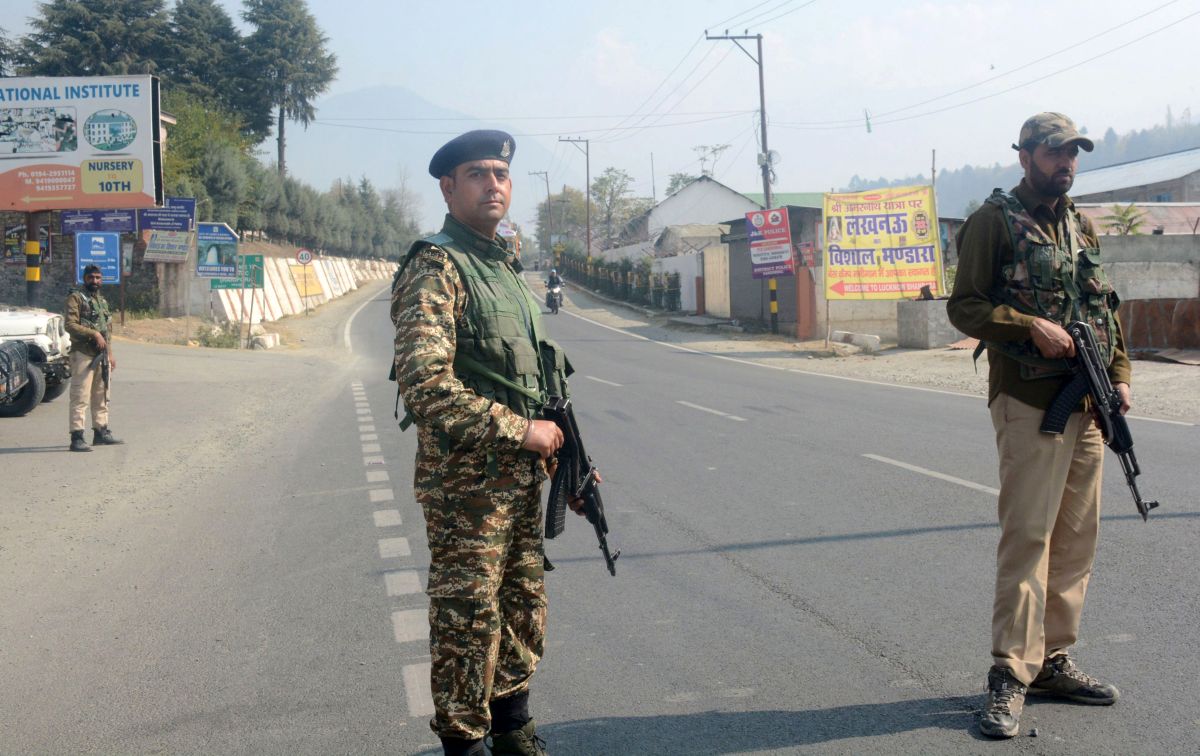SOURCE: UNI

Recently, a Bangladeshi woman was caught at the Rajiv Gandhi International (RGI) Airport in Hyderabad for obtaining fraudulent identity documents, including an Indian passport. The accused has been identified as Sonali Ballav. Sonali Ballav, 29, was arrested on October 16 while returning to India on flight 6E-1274 from Muscat, Oman. A Bureau of Immigration officer at the Hyderabad airport became suspicious of Sonali’s identity during routine immigration checks. She was interrogated. Eventually it came to know that she was not an Indian citizen. Officials have identified Sonali as a Bangladeshi national from Manikganj Sadar, Bangladesh.
Sonali entered India illegally in 2015 through the Petrapole-Benapole border in West Bengal. From there it reached Delhi. Settled in Pandav Nagar, Delhi. A few days later she married Indian citizen Lakshmi Kant Ballav. After that she also fraudulently obtained key identity documents including PAN Card, Voter ID, Aadhaar Card, Indian Passport.
Continue readingSOURCE: IDRW.ORG.

The Defence Research and Development Organisation (DRDO) on Saturday successfully completed the development trials of its indigenously developed 4th Generation Very Short Range Air Defence System (VSHORAD). Conducted at the Pokhran Field Firing Ranges in Rajasthan, the trials saw three consecutive successful flight tests, marking a major milestone for India’s air defense capabilities.
The VSHORAD system, designed as a miniaturized man-portable air defense system (MANPADS), is the latest addition to India’s growing inventory of indigenous defense technologies. This 4th Generation missile system is developed to provide mobile, short-range air defense against aerial threats such as fighter jets, helicopters, drones, and unmanned aerial vehicles (UAVs). DRDO’s achievement reflects its commitment to enhancing India’s defense self-reliance, aligning with the government’s Aatmanirbhar Bharat initiative.
Continue readingSOURCE: IDRW.ORG

Military drones have become a game-changer in modern warfare, fundamentally altering battlefield dynamics. From the Nagorno-Karabakh conflict to the Syrian Civil War and the ongoing Russia-Ukraine tensions, these unmanned aerial vehicles (UAVs) are indispensable tools in shaping the future of war. This trend highlights a significant gap in India’s military capabilities.
Despite being a major world and regional power, India currently lags behind many countries, including smaller ones, in terms of drone technology. A recent report by idrw.org estimates India possesses only around 625 UAVs and drones, with the majority being the 2019-introduced Spylite model. While India acquired 10 Heron 1 drones from Israel, its entire current fleet relies on Israeli technology.
Continue readingSOURCE: AFI

The Indian Air Force’s (IAF) Medium Multi-Role Combat Aircraft (MMRCA) tender, often dubbed the “mother of all defense deals,” saw two of Europe’s premier fighter jets, the Dassault Rafale and the Eurofighter Typhoon, go head-to-head. Both aircraft showcased exceptional capabilities, with the Eurofighter clearing stringent technical rounds of the IAF, while the Rafale ultimately emerged as the winner due to a combination of factors, notably pricing.
This article will compare the Rafale and Eurofighter Typhoon in terms of price and capabilities to understand why the Rafale secured the deal and why the Eurofighter, despite its merits, fell short.
Continue readingSOURCE: AFI

In a significant boost to India’s unmanned combat aerial vehicle (UCAV) capabilities, the Indian Air Force (IAF) has approved the Defence Research and Development Organisation’s (DRDO) plans to transition the Stealth Wing Flying Testbed (SWiFT) program from a technology demonstrator (TD) to a full-scale program. The SWiFT, initially conceived as a test platform, will now be developed into a potent 1-ton UCAV, capable of performing mini-bomber roles and intelligence, surveillance, and reconnaissance (ISR) missions.
This decision underscores the IAF’s growing interest in stealth unmanned platforms, which are essential for modern warfare, particularly in contested environments where survivability, precision, and adaptability are critical.
Continue readingSOURCE: AFI

In a significant move aimed at modernizing its aging fighter fleet, the Pakistan Air Force (PAF) has announced plans to procure the Chinese-made FC-31, a fifth-generation stealth fighter jet currently under development for the People’s Liberation Army Navy (PLAN). The FC-31 is expected to replace PAF’s aging F-16 MLU-15 fighter jets, with the transition scheduled to begin by 2030. This procurement, to be carried out in multiple phases, marks a strategic shift in Pakistan’s defense posture as it looks to acquire cutting-edge technology to maintain air superiority in the region.
The FC-31 is a twin-engine, multi-role fighter jet that boasts advanced stealth capabilities, high maneuverability, and the ability to carry a wide array of weapons, making it a formidable platform in the fifth-generation fighter jet category. Originally developed for the PLAN as a deck-based fighter, the FC-31 has undergone significant modifications to meet the operational requirements of the PAF. While primarily designed for carrier-based operations, the air force variant of the FC-31 will be tailored for Pakistan’s specific defense needs.
Continue readingSOURCE: AFI

Marking a significant breakthrough in India’s defence manufacturing capabilities, the Small Arms Factory (SAF) in Kanpur, Uttar Pradesh, has developed a unique metal that meets the stringent GOST (Gosstandart) standards used in Russian weapons like the AK-203 assault rifle. This advancement is a crucial step toward achieving the goal of producing fully indigenous AK-203 rifles, marking a milestone for the country’s self-reliance in defence manufacturing.
The SAF, a key production unit under the Ministry of Defence and part of Advanced Weapons and Equipment India Limited (AWEIL), played a critical role in this achievement. The factory, along with its metal suppliers, worked tirelessly over six months to develop a metal that would meet the demanding specifications required for the AK-203 rifle, a weapon that has become symbolic of India’s efforts to modernize its military with locally produced arms.
Continue readingSOURCE: AFI

In response to Canada’s persistent non-cooperation with Indian investigative agencies’ requests for information on Khalistani elements settled within its borders, the Indian government is considering a strategic move to share the same list of wanted extremists with the other Five Eyes countries.
Highly placed sources indicate that this action aims to highlight Canada’s uncooperative stance and exert counter-pressure on the North American nation. The Five Eyes nations include the United States, the United Kingdom, Australia, and New Zealand, in addition to Canada.
Continue readingSOURCE: ANI

Canadian Member of Parliament Chandra Arya addressed the issue of Khalistani extremism in Canada, acknowledging that the administration has long recognised the severity of this problem.
He further said that Canada’s sovereignty is “sacrosanct” and any interference by foreign state actors within Canada, in any form is “unacceptable.” In a statement posted on X on Wednesday, Arya said, “Two weeks back, I could safely participate in a Hindu event in Edmonton only with the protection of RCMP officers, as a group of Khalistani protesters staged a disruptive demonstration against me.”
Continue readingSOURCE: IANS

The Union Cabinet, chaired by Prime Minister Narendra Modi, on Thursday, October 24 approved the setting up of a Rs 1,000 crore venture capital (VC) fund dedicated to the growing space sector.
The deployment period of the proposed VC fund, under the aegis of IN-SPACe, is planned to be up to five years from the actual date of the start of the fund operations. The proposed fund is expected to boost employment in the Indian space sector by supporting startups across the entire space supply chain. The average deployment amount could be Rs 150-250 crore per year, depending on the investment opportunities and fund requirements, said the Cabinet.
Continue readingSOURCE: ANI

External Affairs Minister S Jaishankar at the 16th BRICS Summit in BRICS Plus format highlighted the significant strides made by nations that have gained independence from colonial rule, noting their accelerated development and socio-economic progress and asserted that the “BRICS itself is a statement of how profoundly the old order is changing.” Addressing the summit, Jaishankar said, “On the one hand, there is the steady diversification of production and consumption.
Nations that attained independence from colonialism have accelerated their development and socio-economic progress. New capabilities emerged, facilitating the harnessing of more talent. This economic, political and cultural rebalancing has now reached a point where we can contemplate real multi-polarity. The BRICS itself is a statement of how profoundly the old order is changing.” Jaishankar further asserted that to create a more equitable global order, strengthening and expanding independent platforms is crucial, and that’s where BRICS comes in, making a significant difference for the Global South.
Continue readingSOURCE: ANI

Lisa Curtis, Director of the Indo-Pacific Security Program at the Center for New American Security and former White House official, said that the partnership between the United States and India is crucial for maintaining peace and stability in the Indo-Pacific region. Curtis asserted that the US-India partnership is gaining momentum, with initiatives like the Initiative on Critical and Emerging Technologies (iCET) dialogue and the recent USD4 billion deal for India to purchase 31 MQ-9B Predator drones.
She said that these developments demonstrate the deepening defence and security partnership between the two nations. The remarks by Curtis came while addressing the Indian Army’s Chanakya Defence Dialogues in New Delhi. During the address, Curtis said, “The US-India partnership is also vital for preserving peace and stability in the broader Indo-Pacific region.
Continue readingSOURCE: PTI

More than 70 flights of various Indian airlines received bomb threats on Thursday, according to sources.
The sources said around 20 flights each of Air India, Vistara, and IndiGo have got the threats while Akasa Air has got the threats for about 14 flights. In 11 days, nearly 250 flights operated by the Indian carriers have received the bomb threats.
An Akasa Air spokesperson said some of its flights operating on October 24 have received security alerts.
Continue readingSOURCE: PTI

Terrorists shot at and injured a labourer from Uttar Pradesh in the Tral area of Pulwama district of Jammu and Kashmir Thursday morning, officials said. Shubam Kumar, a resident of Bijnor, Uttar Pradesh, received a gunshot injury in the arm when the terrorists fired at him at Batagund village, the officials said.
They said Kumar has been rushed to a hospital for treatment.
Continue readingSOURCE: IANS

A policeman was injured on Thursday when a grenade went off accidentally in Jammu and Kashmir’s Baramulla district. Officials said the policeman was injured when a grenade went off accidentally in the ‘Malkhana’ of the court complex in the town.
“At around 1.05 p.m., a grenade went off accidentally in the ‘Malkhana’ of court complex in Baramulla town. The injured policeman was on duty when the accident happened. People are advised not to pay any heed to rumours. The situation in the town is completely under control,” the officials said.
Continue reading